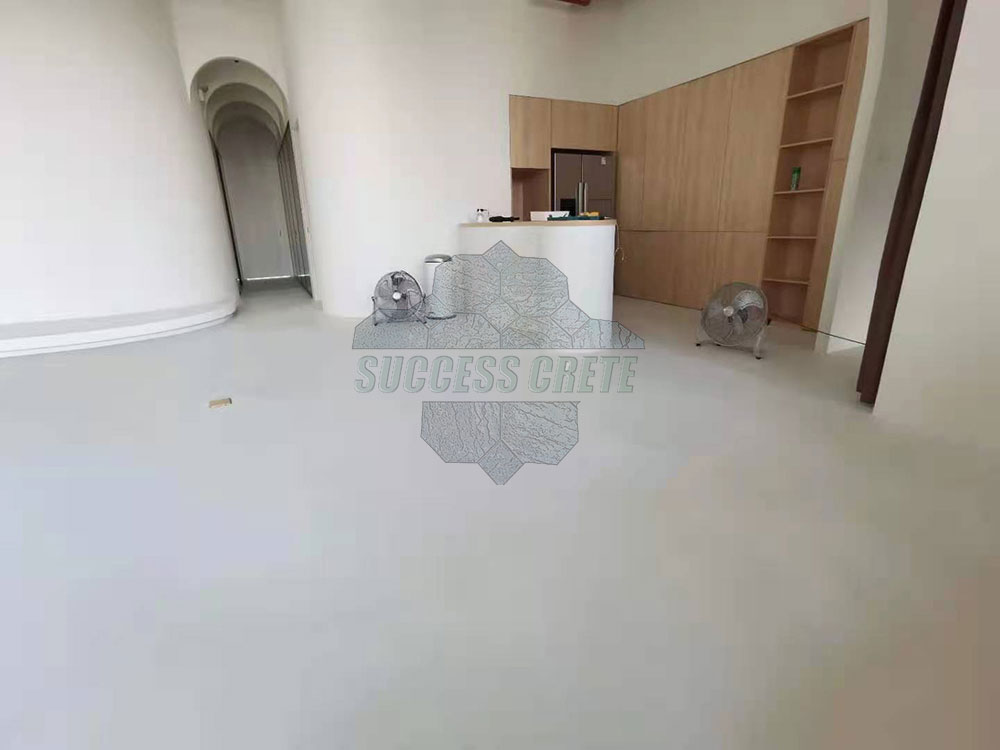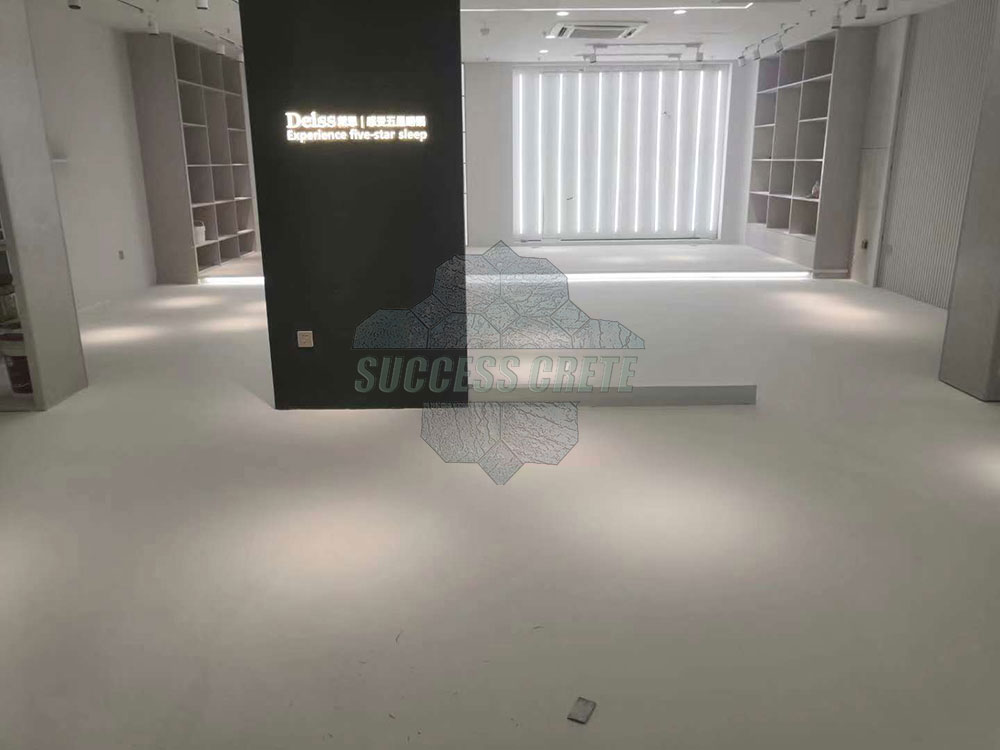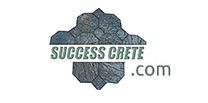Introduction
What if there was a flooring option that could hide all of your imperfections and make your space look absolutely flawless?
Well, there is! Self-leveling overlays are the newest and most innovative flooring option on the market.
They can be installed over any surface to create a completely level surface. Not only do they look great, but they’re also extremely durable and long-lasting.
If you’re looking to update your flooring, self-leveling overlays are definitely worth considering!
The self-leveling overlay has been around for decades, but it was originally used only in practical applications.
In the late 1980s, this versatile flooring finish began to become a legitimate alternative when more expensive high-end materials like slate or granite were not desired due to their costliness.
Self-leveling Overlays are cheaper than these alternatives and may even outlast them if properly sealed maintaining good care of your home’s floors!
Concrete is known as one of the most durable, practical, and reliable building materials.
However, it has not always been so popular because its looks were bland or uninteresting to many people who wanted their floors to look stylish in comparison with other options available at that time such as stone finishes which could be more costly if they didn’t have any pattern on them – especially when you consider how much wear down your feet will go through over the years!
But now there’s an alternative: cement self-leveling overlays (or simply called surfacing) can make old uneven concrete slabs come back into shape once again while also being cost-effective enough for most homeowners’ budgets.

The blog will include the following content:
This article focuses on,
- What self-leveling overlays are?
- What are the benefits of self-leveling overlays?
- Why should you choose a self-leveling overlay?
- How to use a self-leveling overlay?
1. What self-leveling overlays are?
Self-leveling overlays are a type of material that can be used to level out a surface. They are commonly used on floors and countertops, but can also be used on walls and ceilings.
Self-leveling overlays are made from various materials, including concrete, epoxy, and polyurethane. self-leveling overlays are typically applied in thin layers and will harden or cure within a few hours.
Once cured, self-leveling overlays are extremely strong and durable and can withstand heavy traffic and abuse. self-leveling overlays are an excellent choice for any project where a smooth, level surface is desired.
They are perfect for any project that requires an easy installation with great results. You can use them anywhere – residential, commercial, or restaurant!
They come in different styles depending on your needs: self-leveling pour heads offer many options to transform old spaces into new ones while providing strength and stability so you don’t have to worry about cracks later down the line.
Valspar Poured Head is also available as well if this type of construction isn’t what’s needed but rather something more simple like concrete nail patterns which will give just enough detail without being too complicated.
Self-leveling surfaces provide versatility because they work beautifully across various types including homes & offices.
Decorative, versatile, and stylish
The popularity of self-leveling concrete overlays has been on the rise since they were first introduced in 2000.
In recent years cities like Las Vegas have begun using them for nearly all interior flooring needs; this trend is now spreading throughout America as well!
Not only do these floors add beauty but their durability means there’s no need to worry about potential problems with moisture or other factors that could lead to an issue down below – something we’ve seen before when looking at older building styles.

2. What are the benefits of self-leveling overlays?
Self-leveling overlays are a type of flooring that can be used to create a smooth, level surface. This can be beneficial in a number of ways.
First, self-leveling overlays can help to fill in unevenness or holes in the floor, creating a level surface that is less likely to trip someone up.
Second, self-leveling overlays can help to create a smoother surface for rolling furniture or equipment. This can make it easier to move things around and reduce the risk of damage to the floor.
Finally, self-leveling overlays can provide a barrier between the floor and any liquids that may be spilled on it. This can help to protect the floor from stains or damage.
Overall, self-leveling overlays can be a great way to improve the look and function of a floor.
Self-leveling overlays are a great option for installers and end users because they provide an easy way to create whatever finish you want on your concrete.
The surface can also serve as protection against further damage, especially when used in thicker layers which makes these products handy around vehicles or other high-traffic areas where things might sometimes get knocked over by mistake!
Self-leveling asphalt has some really exciting features too – its quick drying time means less work later down the line; plus there isn’t any pesky moisture seeping through into neighboring tiles, unlike traditional approaches.
Although self-leveling overlays have some limitations, they can be a great option for interior applications.
They provide better quality than micro surfacing and spray systems because of the thickness of their application as well as using natural ingredients that aren’t flexible after drying like other products on market today – this means less cracking or flaking away when exposed to air movement!

3. Why you should choose self-leveling overlays?
If you’re a business owner, you know that maintaining your property is essential to keeping up the appearance of your company.
And if you’re looking for an easy way to restore your concrete floors, a self-leveling overlay may be the perfect option for you!
This affordable and durable solution can help hide any flaws in your flooring and give it a new lease on life. So if you’re considering updating your property, don’t forget about the potential benefits of a self-leveling overlay!
The Expanding Role of Self-Leveling Overlays in Decorative Concrete
In the world today, there are many different types and styles of floors. However, with advances in technology comes an innovative new product that will change how we think about our flooring needs forever!
Self-leveling overlays allow you to have something as simple but elegant looking as hardwood or carpet without having any concern over gaps at all because these products know exactly where they need to be leveled so no more worrying whether your boards match up perfectly from side to etc…
It sounds too good not to try out right away!
The future of flooring is all about elevation.
As self-leveling overlays continue to expand in use, so does their popularity for decorative concrete floors like acid staining or waxes and clear sealers – but they’re also being used more seriously with newer options like polished floors that need an extra something special.

4. How to use a self-leveling overlay?
All business owners want their businesses to look the best they can. In some cases, this may mean taking on a project that you’re not familiar with, like using a self-leveling overlay.
Don’t worry though – we’re here to help!
Next, the guide will tell you everything you need to know about using a self-leveling overlay, so your business can look its best.
When you need to refinish your floors in the shortest amount of time, a self-leveling overlay is often an excellent choice.
These products can level out rough edges and restore old ones without any hassle or mess for both homeowners like yourself as well as commercial establishments such as restaurants,
may want their floor replaced quickly after installation due to life safety concerns (such restaurant patrons should never be able to walk on slippery surfaces).
Preparing the surface for an overlay begins with proper preparation.
If cracks are present, evaluate whether they’re static or moving to determine the best course of action and repair product that will work on your particular system – some manufacturers offer specific products just for their systems like a Shrinkwrap around (SawStop) hybrid panels which can help avoid sawing through concrete if you’re installing them next door where there’s already an existing joint;
however, it may be easier than trying cut back at both ends once everything has set up nicely!
Whether you’re pouring your first concrete or RE rehabilitation, it’s important to know the right tools for success.
When working with freshly mixed materials on a wet surface that has not yet cured into solidness enough (i e: 28 days).
Self-leveling overlay installation requires special attention, in order to prevent ridge spalling and potential delamination during application because these actions would result from excess emissions heat under such conditions.
If shot peening is preferred by industry professionals then they should aim at maintaining 4-6″ thicknesses throughout all areas where overlays will go; this ensures strong bonds between layers which leads us closer.
The next important step is to apply primer.
If you neglect this, then there can be many failures such as delamination and bubbles which will lead your project to be ruined easily if they aren’t fixed in time with good repairs or replacements for damaged parts before it gets too late!
The purpose of applying a sealant-like substance on top (or bottom) would not just stop any water from seeping through but also help provide better adhesion between materials using different types together – meaning fewer opportunities listed problems later down the line when things get more complicated than expected.
After purchasing a base coat, most manufacturers recommend applying two or three coats of primer depending on the product used.
The type and quality of your flooring will determine how much you need to apply before installation – some self-leveling overlays have thin enough sprayable primers that allow for just one application with an airless paint spraying machine;
these take about 3 hours total from start (base) drying time until they’re ready t use!
Epoxy primers are a thicker material that requires the use of scrapers and rollers.
They also need hand-spreading sand into them to ensure adhesion on top, which can take 12 – 24 hours depending on site conditions such as air temperature or humidity in order for it all to dry properly before applying your overlay!
Self-Leveling Overlay Defined
This new invention can revolutionize how floors are installed. Instead of laying down wood or concrete, the self-leveling overlay creates an incredibly flat and durable surface that’s just as good in many ways – if not better!
This means no more worrying about those pesky cracks between your tiles; they’ll all stay put now thanks to this clever cement mixture.
A “self-leveling” polymer mainly made up of polycarboxylate styrene (PS), auto binder, etc., which has been known for its strong resistance against water damage. It also provides excellent durability compared with ordinary concretes.
The self-leveling overlay looks almost identical to regular concrete. It’s easy for the unsuspecting eye not to notice that there are some subtle differences between it and traditional construction materials like stones or bricks when they stand side by side in a parking lot landscape – until you come across an uneven section where only one type of element will do what is needed!
The most notable difference between self-leveling overlays and concrete is that while the former can be placed at any thickness, it does not usually have to alter its elevation.
Self-leveling agents contain fine aggregates such as silica or quartz; may include volcanic ash like flash (or slag) which is mixed with water into a thin layer about 10% thick—most times measuring between ¼” – ½”.
It’s important for these materials not only to provide traction but also cushion against impacts so you don’t hear pop noises when walking across your newly installed flooring!
The purpose and advantages of self-leveling overlays
The self-leveling overlay is a mixture of special cement, and fine aggregate polymers which are mixed with highly effective water-reducing agents to form a thin durable layer that does not need another flooring material under it but there are various types for application methods.
Self-Leveled Overlay offers unique features unlike other types like smoothed or sprayed ones; one example would be how they can create a slope on top without actually having any slopes in materials beforehand (which means less work).
The Role of Self-Leveling Layers in Decorative Concrete
Self-leveling concrete is a relatively new innovation that allows for the creation of flat and level surfaces in older buildings.
This alternative to traditional flooring has been used primarily as an aesthetic choice, but it also offers several advantages over its predecessor such as reduced maintenance needs or improved durability which leads many people.
The people who previously wouldn’t consider these options due to them trying out different finishes including clear waxes/sealers and color pigments integrated into some products like stains where you can get your desired look without needing any special tools.
The use of self-leveling overlays in conjunction with saw cuts and transition strips has been an integral part of creating designer floors.
With these tools, designers can create geometric shapes like curves or borders while also adding patterns such as tiles throughout their design process without having to worry about adjusting levels constantly on site which will save them time overall when completing project deadlines!
When it comes to choosing a self-leveling concrete contractor, there are a few things you’ll want to keep in mind.
First and foremost, you’ll want to make sure that the contractor you choose is experienced and reputable, please Please click here for details.
In the end, choosing the right self-leveling concrete contractor is all about finding someone you can trust like successcrete to do a good job at a fair price, and please don’t hesitate to contact us today.




